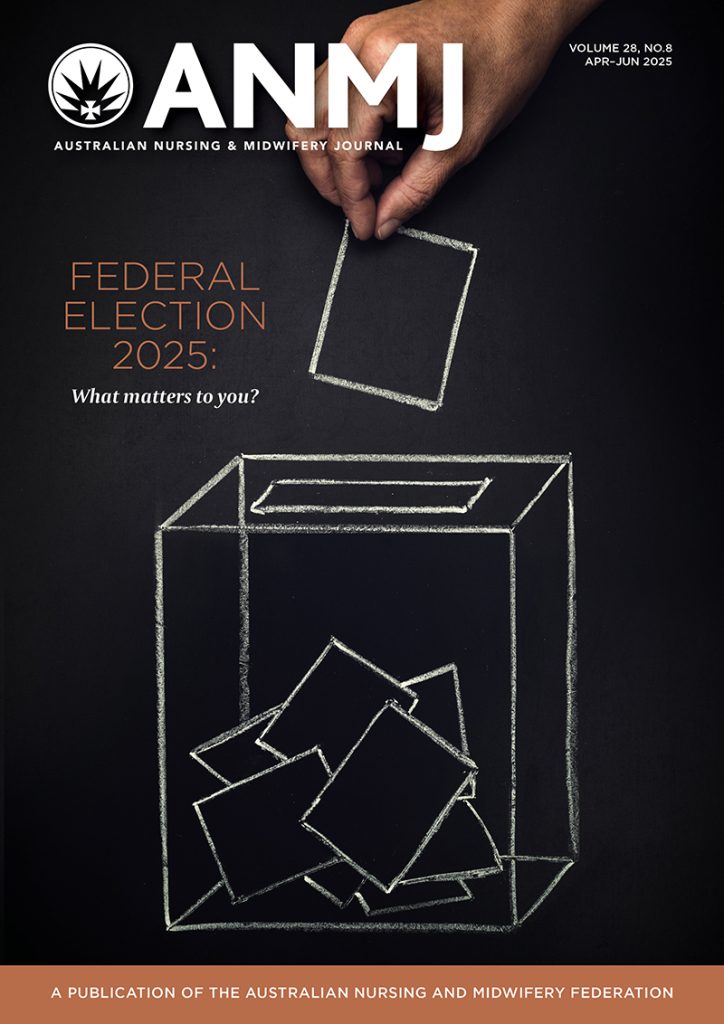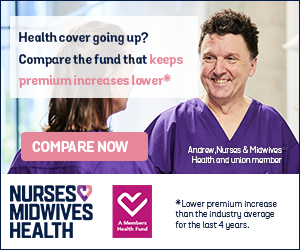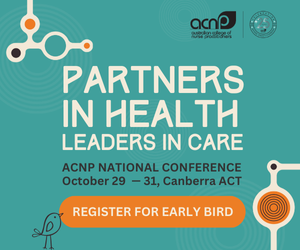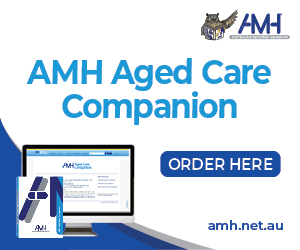Healthcare workers (HCW) are using personal protective equipment (PPE) more often and for longer wear times to reduce the risk of contracting or transmitting COVID-19.
The authors have noted images of nurses from around the world with significant mask-related facial skin injuries and the expeditious development of HCW guidelines, to prevent these skin injuries.
It is proposed that there needs to be an exploration of PPE mask related skin injuries [PRSI (m)] and the application of these guidelines in the Australian context. The expertise that Clinical Nurse Consultants (CNCs) in wound management have, in iatrogenic skin injury prevention, makes them well positioned to offer insight into this challenge. For the purposes of this opinion piece, skin injury is defined as an alteration of skin integrity due to an external cause or factor.
Until further evidence becomes available, the authors suggest the following principles on protocol development, for PRSI (m) in Australian HCWs:
- Application of Australian Occupational Health and Safety legislation and regulatory practices, when designing protocols for mask use;
- Where possible managing one hazard should not introduce another hazard or compromise existing risk mitigation, eg. risk of infection is not increased by the application of prophylactic dressings/creams.
The nature of the COVID-19 infection (eg. high virulence, long incubation period, asymptomatic carriers, and severe health outcomes for some people) has necessitated a high degree of care when using masks to ensure their effectiveness in protecting HCWs against infection. It was noted that in online crowdsourced discussion groups such as “Nursing in the time of COVID-19 – A clinical forum” and informal discussions within health service networks, nurses were seeking advice, in order of descending frequency, for: rashes and allergy-type descriptions, pain, acne and facial itching or sores.
Two main themes identified in these forums from a skin-integrity perspective were:
- A limited understanding of what was causing the harm, and
- A wide variation in the ideas and suggestions to protect the skin of HCWs.
This knowledge gap between the causes of PRSI (m) and best practice prevention/treatments, is consistent with the experience of wound CNCs, who educate clinicians on pelvic skin injuries, and is witnessed when educating HCWs on pressure injury identification and differentiation from other aetiologies such as dermatitis, including incontinence associated dermatitis (IAD).
The parallel between identification of IAD versus pressure injury (PI)s and their subsequent treatment, is a useful analogue, as these skin injuries can appear together and guidelines do not recommend dressings to prevent IAD, (Beeckman et al. 2015) nor to use a barrier cream to treat a PI, (EPUIP, NPUIP and PPPIA 2019). HCWs deserve the same level of evidence-based prevention and treatment to protect their skin. This difficulty in identification may exist due to the complexity and overlapping causes of skin injury (Beeckman et al. 2020), rather than a knowledge gap per se.
Internal health service reporting identified that contact dermatitis and exacerbation of acne was reported in HCWs wearing masks for long periods; however, this contrasts with evidence that pressure is a frequent cause of injury (Jiang et al. 2020). Other suspected mechanisms of injury include friction, moisture, the interaction of the HCW skincare in a humid environment or other factors, yet to be identified.
To understand the application of the prevention strategies in the authors’ local clinical settings, as recommended in the Canadian document, ‘Prevention and Management of Skin Damage related to Personal Protective Equipment: Update 2020’ (NSWOCC 2020) and the PRPPPE white paper (Alves et al. 2020) two of the authors informally tested a range of available masks with suggested skin injury prevention strategies. The authors experienced pain and discomfort directly from some of the masks and skin irritation from the removal of some of the dressing materials used for prevention. Many of the recommended interventions affected the ability to achieve a correct mask fit or led to the seal being lost within a short space of time (<30 minutes). Furthermore, it was noted that some of the dressing suggestions, in the aforementioned guidelines, did not meet the criteria for a prophylactic dressing, recommended as first line prevention for patients.
The authors consider that the existing frameworks for identifying and treating IAD and PI may be able to be extrapolated to these HCW mask-related skin injuries and propose the following considerations to prevent and treat PRSI (m):
- Pressure/shear protection for HCW should follow the same principles as the best practice for patient pressure injury prevention.
- Dermatitis prevention should be in line with occupational dermatology practice and IAD prevention may provide a starting point for research. However, when dermatitis occurs, the principles for treating IAD can be applied:
- Remove the cause of the irritant
- Do not apply anything to the skin that would prevent the treatment of dermatitis (eg. any interventions that create a physical barrier and prevent medicated creams from being effective, or leave residue on the skin).
- For intact skin, where there is no current evidence of injury, any prevention must not compromise mask function and effectiveness. However, when a HCW develops a PRSI (m) (of any severity or cause), the individual risk management plan should balance the skin injury and infection risks. This may include referral to clinical experts.
The responsive development of guidelines from global regions, suffering high COVID-19 infection rates and significant mask shortages must be acknowledged, however, they may not be suitable for broad adoption in Australian healthcare settings.
Instead, these guidelines offer directions for further research, and Australian health services are well positioned, because of low community transmission rates, to do this work. The authors hope that these suggested guiding principles, encourage the development of Australian guidelines to prevent PRSI (m), and for HCWs to report PRSI (m) and recognise these skin injuries as being unacceptable.
Acknowledgements: Karlee Robson (RN, hand Hygiene coordinator, Melbourne Health); Sharon McIlduff (RN, IPSS project nurse, Melbourne Health); Pauline Whittle (RN, Clinical Product Advisor, Melbourne Health); Andrew Reynolds (Safety Partner, Melbourne Health); Dr Jill Campbell (RN, Centaur Fellow, QUT);Trish Mant (Head of Practice Development Unit, Barwon Health); Jo-Anne Stafford (CCRN, Clinical Products Advisor, Barwon Health); Paul Simpson (RN, Manager Infection Prevention Service, Barwon Health)
References
Alves, P., Gefen, A., Moura, A., Vaz, A., Ferreira, A., Beeckman, D., Malcato, E., Sousa, F., Afonso, G., Kottner, J., Cabete, J., Ramos, P., Dias, V., Homen-Silva, P. PRPPE|COVID-19 – UPDATE. Prevention of skin lesions caused by Personal Protective Equipment (face masks, respirators, visors and protection glasses). Associação Portuguesa de Tratamento de Feridas 2020
Beeckman, D et al. Proceedings of the Global IAD Expert Panel. 2015. Incontinence-associated dermatitis: Moving prevention forward. Wounds International [cited on 23 June 2020] Available from www.woundsinternational.com
Beeckman. D., Campbell, K., LeBlanc, K., Campbell, J., Dunk, A.M., Harley, C., Holloway, S., Langemo, D., Romanelli, M., Tariq, G., Vuagnat, H. 2020. Best practice recommendations for holistic strategies to promote and maintain skin integrity. Wounds International [cited on 25 June 2020]. Available from www.woundsinternational.com
European Pressure Ulcer Advisory Panel (EPUAP), National Pressure Injury Prevention Panel (NPIAP), and Pan Pacific Pressure Injury Alliance (PPPIA). 2019. Prevention and treatment of pressure ulcers/injuries: Clinical practice guideline. The international guideline. Emily Haeslar (Ed.)
Jiang, O., Song, S., Zhou. J., Liu. Y., Chen. A., Bai. Y., Wang. J., Jiang. Z., Zhang. Y., Liu. H., Hua. J., Guo. J., Han. Q., Tang. Y., Xue. J. 2020. The prevalence, characteristics, and prevention status of skin injury caused by personal protective equipment among medical staff in fighting COVID-19: a multicenter, cross-sectional study. Advances in Wound Care. Vol.9 No 7. DOI: 10.1089/wound.2020.1212
LeBlanc, K.; Heerschap, C.; Butt, B.; Bresnai-Harris, J.; Wiesenfeld, L. 2020. Prevention and Management of Personal Protective Equipment Skin Injury: Update 2020. NSWOCC. Available from: www.nswoc.ca/ppe
AUTHORS
Sarah Sage, RN, NP, is Clinical Nurse Consultant-Wound Management, Royal Melbourne Hospital, Victoria Australia
Monika Samolyk, RN, is Wound Nurse Consultant, Gateway Health, Regional Wounds Victoria – Hume East, Australia
Donna Nair, RN, is Clinical Nurse Consultant-Wound Management, Barwon Health, Victoria, Australia









One Response
Those is a great photo for impact, but that beard would not allow him to have a (safe) fit tested mask and restrict the areas he could work.